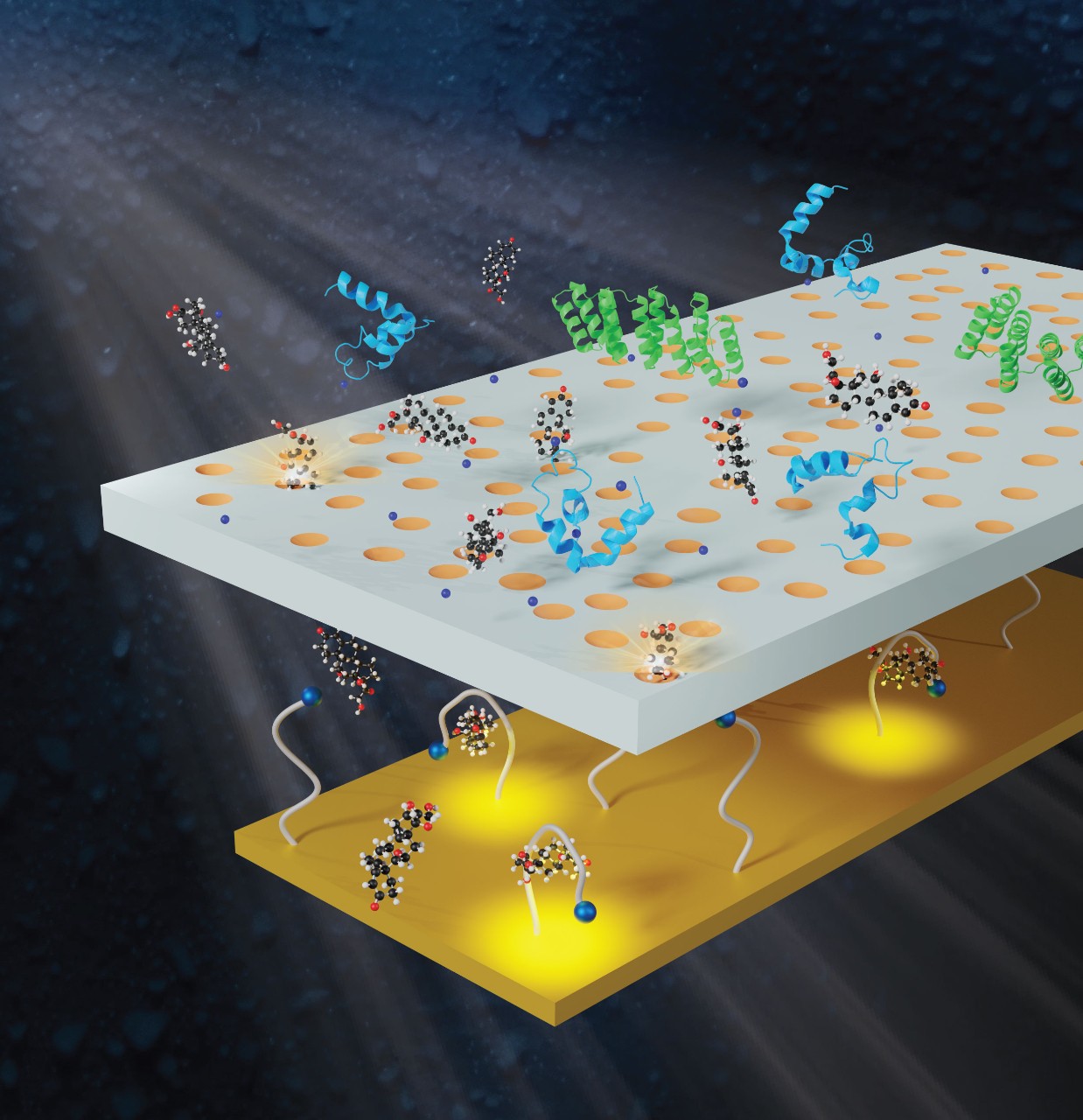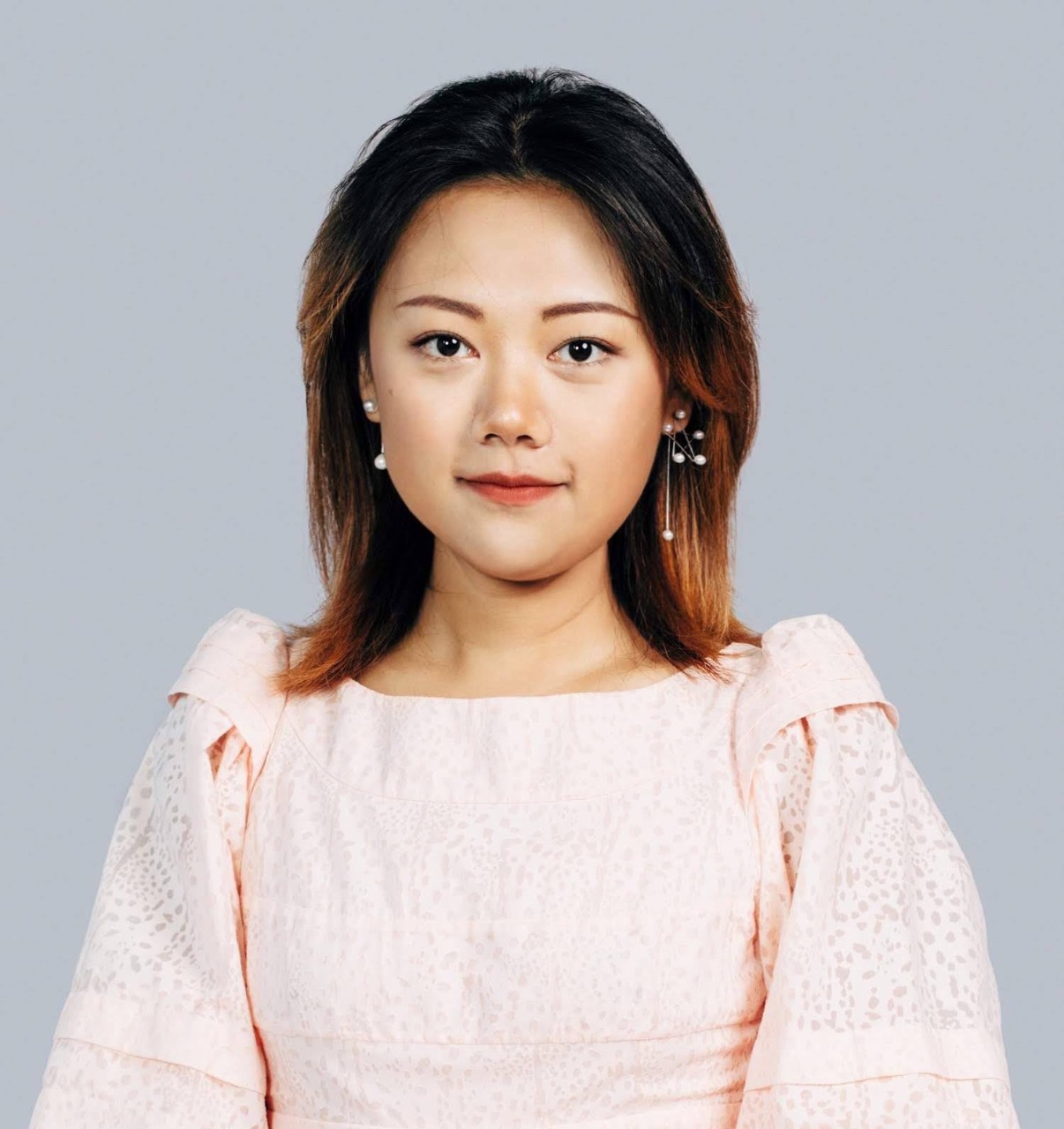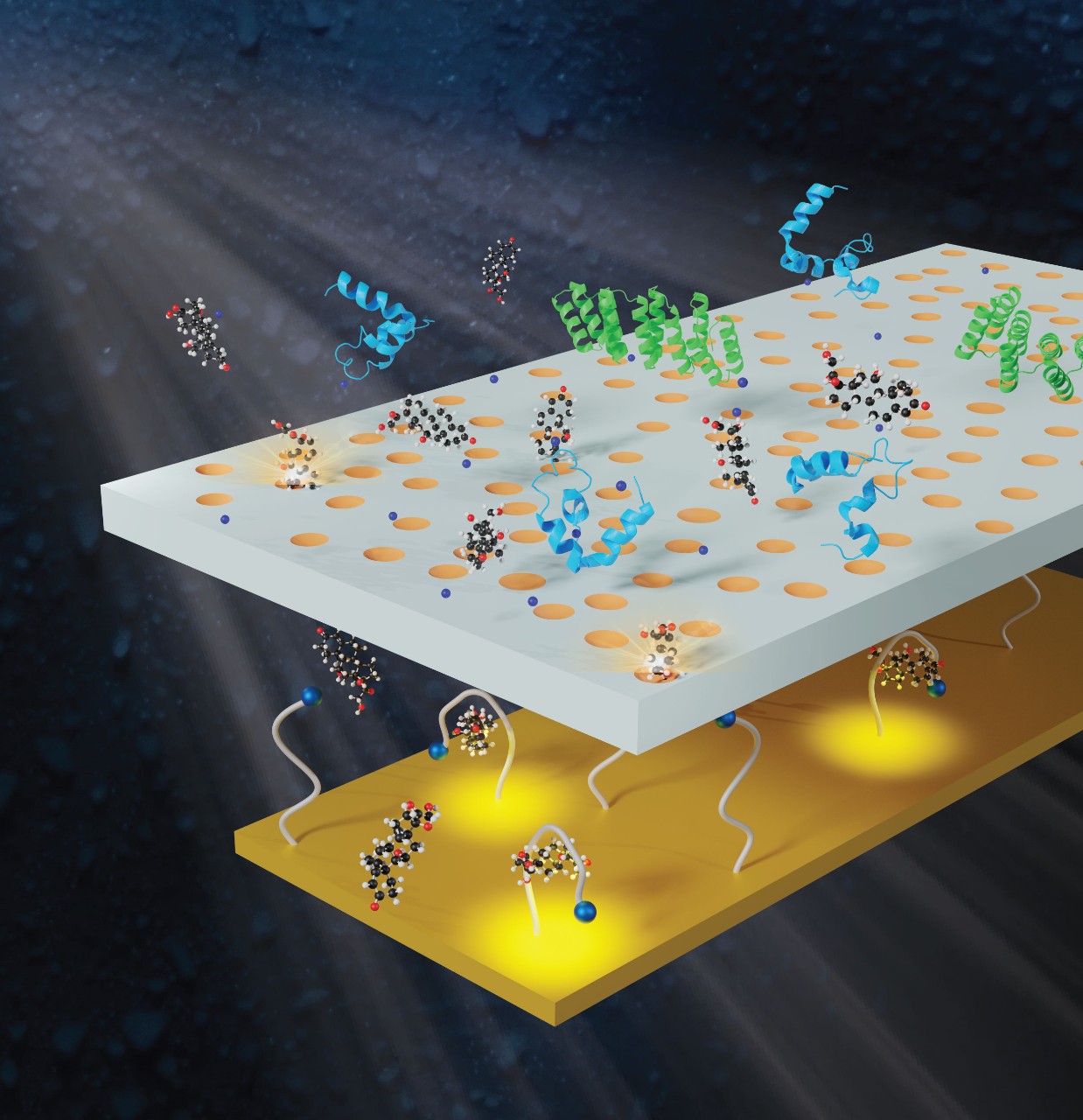
Journal issue will feature article and cover art by UC student
An upcoming issue of the journal Applied Materials & Interfaces will feature not only a research article by a University of Cincinnati engineering student but her cover art as well.

Yuchan Yuan
The article titled “Oil-Membrane Protection of Electrochemical Sensors for Fouling and pH-Insensitive Detection of Lipophilic Analytes” focuses on the theory and device design of wearable biosensors that are effective and accurate in the harsh chemical environment of sweaty skin with wide-ranging acidity levels.
UC College of Engineering and Applied Science doctoral candidate Yuchan (Lotus) Yuan is lead author on the paper and also submitted her related artwork, which the publication chose for the cover of the Nov. 17 issue. Her cover art features a background of sweaty skin and the oil membrane sketched with Autodesk Fusion 360 then pulled together and finished in Adobe Illustrator.
“This cover is based on the idea that the oil membrane technique is very helpful and important for the application of wearable and implanted biosensor,” Yuan said. “In the paper, we took sweat as example to demonstrate that.”

Yuan's artwork that will appear on the cover of Applied Materials & Interfaces. Graphic/Yuchan Yuan
Yuan is finishing her doctorate in electrical engineering after earning her bachelor’s degree in the same subject in 2018, both at UC. She also earned a bachelor of science degree in electrical engineering from Chongqing University while participating in UC’s Joint Co-op Institute, in which she completed four years of study at Chongqing and a final year at UC.
“I really enjoyed my time in this program,” Yuan said. “It exposed me to both Chinese and American college education, which have many differences. It allowed me to develop a global vision and open my mind from two cultures/perspectives.”
She conducts her research in UC’s Novel Devices Laboratory, led by professor Jason Heikenfeld. She previously performed research in the lab as an undergraduate student.
After completing her doctorate, Yuan plans to help others have the same experience she has had.
“I plan to stay in academia to be a professor one day. I have a lot of passion for teaching,” she said. “I think that education and teaching can have a life-long influence on students to guide them through challenges in professional career and personal life. As for research, I think I’ll continue the focus on biosensors, especially on applications for health-related issues.”
Become a Bearcat
The University of Cincinnati is classified as a Research 1 institution by the Carnegie Commission and is ranked in the National Science Foundation's Top-35 public research universities. UC's medical, graduate and undergraduate students and faculty investigate problems and innovate solutions with real-world impact. Apply today.
Related Stories
UC, Nexigen agree to collaborate on AI security
April 23, 2024
An agreement between the University of Cincinnati and information technology and cybersecurity firm Nexigen will lead to collaboration on artificial intelligence, which includes a goal of making the technology more secure. Nexigen, one of the Cincinnati region's largest IT service and cybersecurity firms, builds technology solutions for companies in the United States. While not a legally binding contract, the agreement between the Kentucky-based company and UC will lead to cooperation on securing grants, give UC students real-world experience and provide Nexigen with expertise from UC faculty and students.
WVXU: Find your CPAP annoying? UC researchers are working on a...
April 22, 2024
Dr. Liran Oren is leading a research team at the University of Cincinnati developing a VortexPAP machine that takes advantage of vortex airflow technology. A preliminary clinical study with current CPAP users demonstrated that the VortexPAP can deliver the pressure levels that are used in the subjects’ CPAP therapy, but the mask is more comfortable to wear. It has a minimalistic design that is less intrusive and barely touches the patient’s face.
UC's record graduating class prepares for next chapter
April 22, 2024
UC will confer degrees to 7,521 degrees to 7,391 students. (Some students are earning multiple degrees.) Both represent new records at UC for a single graduating class dating back two centuries.
